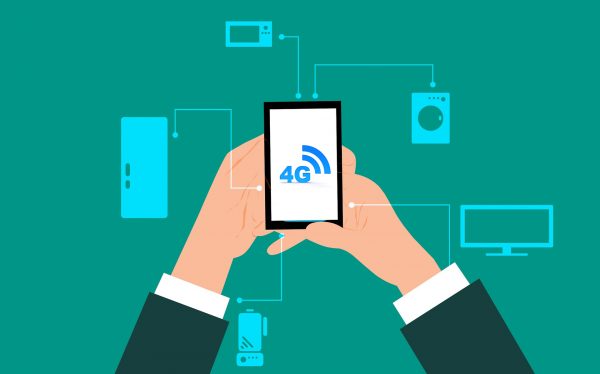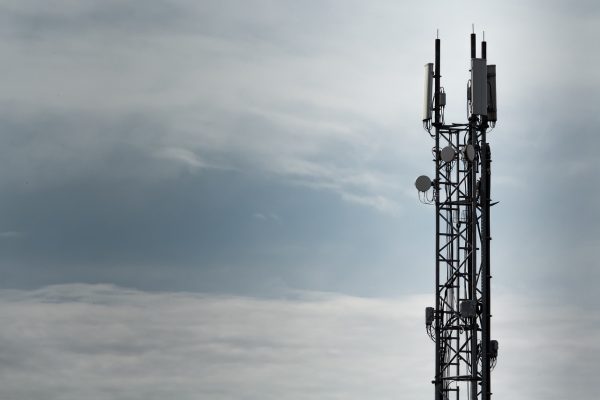The world of cellular technology is ever-evolving, with new advancements being made almost every year. With that in mind, it can be hard to keep up with each development. In fact, chances are you probably don’t even know the difference between 4G and LTE.
Some people think they are one and the same, and those people could not be any more wrong. While the two do share similarities, they are not exactly interchangeable. Here is an in-depth guide to its differences between 4G vs LTE.

What Is 4G?
If you haven’t been living under a rock these past several years, there is a good chance you have come across 4G in one way or another. In simple terms, 4G is the fourth generation in cellular network technology. It builds upon the foundation previously set by 3G and 2G, its predecessors.
However, unlike earlier generations, 4G does not make use of circuit switching. Instead, it operates using an all-Internet Protocol (IP) based communication. This includes Voice over Internet Protocol (VoIP). While 4G and 3G have a lot in common, the former completely dumps the spread spectrum radio technology used by the latter.
Rather, 4G uses OFDMA multi-carrier transmission, among other frequency-domain equalization (FDE) schemes. This change allows 4G candidate systems to transfer significantly high bit rates amidst echoes.
Apart from VoIP, a 4G network enables users access to mobile internet, gaming services, video conferencing, etc. Compared to 3G, 4G offers faster upload and download speeds, a more reliable connection, and clearer voice calls.
What Is LTE?
You may be wondering, “What does LTE stand for anyway?” Short for Long Term Evolution, the term has long been confused with 4G. However, they are not the same thing. To put it simply, LTE is the stepping stone or bridge that connects 3G and 4G. Think of it as an upgrade to 3G but not exactly on the same level as 4G.
But before true 4G was achieved, the standards set by the ITU-R were largely deemed unattainable. In fact, a number of tech companies spent a lot of time and money to reach the requirements but failed to do so. For this reason, when LTE was introduced, the ITU-R allowed it to be called 4G despite not meeting its standards. The way they saw it was, as long as it was significantly better and more advanced than 3G, it could take on the name of 4G.
However, due to the change of rules, carriers began selling LTE as 4G. In retrospect, though, LTE cannot be considered as true 4G because it did not fulfill the IMT-Advanced requirements.
What Is 4G LTE?
As a result of the ITU-R lowering the bar for what could be marketed as 4G, service providers jumped at the chance to offer LTE as “4G LTE.” This is why, for a long time, people confused the two as being one and the same. And, if you think you have experienced 4G, you may be wrong. Just because your mobile phone displays a “4G” symbol on the top corner of your screen does not mean that it is true 4G. In fact, it could just be 4G LTE.
While you may feel tricked or fooled, it is important to remember that 4G LTE still provides substantially better and faster service than 3G. If you want to know whether your service is actually 4G or not, you may contact your carrier for details.
What Is LTE-A?
As if the comparison between 4G vs LTE weren’t confusing enough, let’s throw in LTE-A into the mix. If you are finding this all perplexing, rest assured that you are not alone. LTE-A, which stands for Long Term Evolution Advanced, achieves the standard put forth by the ITU-R for 4G. In other words, LTE-A is true 4G connectivity.
As a more evolved version of LTE, LTE-A uses Carrier Aggregation (CA) as one of its new functionalities. This technique results in an increased data rate per user. LTE-A also makes better use of existing multi-antenna techniques (MIMO) to increase speed and stability.
LTE-A has been a long time coming. The 3rd Generation Partnership Project (3GPP) formally submitted LTE-A as a 4G candidate in late 2009. However, it was not until early 2011 that it became standardized. After some tweaks, trials, and additional features, LTE-A has officially become a commonplace.

4G vs LTE: Differences Explained
If you have gotten this far, you probably already know that true 4G and 4G LTE are not the same. Here, we will discuss the specific distinctions that separate the two wireless networks. So, what’s the difference between 4G vs LTE?
Speed
Many people may find it hard to believe that there is a speed faster than LTE. Sure, the change in speed from 3G to LTE is certainly very noticeable. However, is true 4G really that much quicker? To put it bluntly, yes.
True 4G and LTE-A boast upload and download speeds 10 times faster than regular LTE. The upload speed of a real 4G network is at 500 Mbps, while its download speed is at 1000 Mbps. If you are using HSPA+ (a hybrid 3G network), you are operating at a speed even slower than normal LTE.
You may have also heard of Worldwide Interoperability for Microwave Access (WiMAX), which is another wireless broadband. The first WiMAX release achieved speeds faster than normal LTE but still dramatically lower than true 4G. However, its second iteration, WiMAX Release 2, attained the seemingly impossible. It is now recognized among true 4G connections.
So, how fast is 4G LTE compared to other connections? Here is a table comparing the speed of each network:
| Standard | HSPA+ | LTE | WiMAX 1 | WiMAX 2 / LTE / True 4G |
|---|---|---|---|---|
| Download | 84 Mbps | 100 Mbps | 128 Mbps | 1000 Mbps |
| Upload | 22 Mbps | 50 Mbps | 56 Mbps | 500 Mbps |
Reduced Latency
Compared to LTE, 4G offers a tremendous reduction in latency. This means a mobile device on a 4G network experiences a faster response when performing commands. Hence, reducing the delay or lag time. In comparing 4G vs LTE, the LTE has a latency of about 10 milliseconds, which is twice as high as 4G’s, at less than 5 milliseconds.
Granted, you may think 10 milliseconds is not that bad. However, the reduced latency of 4G can make a huge difference when you are playing online games or streaming live videos. A smaller latency also allows for clearer voice calls and video calls. Additionally, you will notice the lack of an echo when talking to someone over the phone.
LTE-Advanced Specifications
As previously stated, LTE-A falls under the umbrella of true 4G. It has a download speed of 1000 Mbps and an upload speed of 500 Mbps. LTE-A also has a reduced latency compared to other cellular technologies. For example, HSPA+ has a latency of 50 milliseconds, while regular LTE has a latency of approximately 10 milliseconds. LTE-A cuts normal LTE latency in half, clocking in at less than 5 milliseconds. It also only takes about 50 milliseconds to go from idle to connected with LTE-A.
In terms of spectral efficiency, LTE-A is three times greater than LTE. This means LTE-A better optimizes the use of bandwidth, which results in more data transmitted with fewer errors. The peak spectral efficiency of LTE-A is at 30 bps/Hz for downlinks and 15 bps/Hz for uplinks.
Resources Needed
There are two components that allow for 4G connectivity. First, you will need a network that is able to support the necessary speeds. Without this, you cannot achieve a 4G connection. Second, you will need a device that can connect to the aforementioned network. This device must also be able to download data at a high enough speed.
For a long time, carriers sold mobile phones that could support 4G and LTE connectivity, even though those cellular technologies were still unreachable. With mobile phones that could attain the required speeds, it became easier to introduce 4G and LTE networks to the public. Carriers then began offering the service to a limited extent. Today, 4G and LTE are not hard to come by, so getting a mobile phone that supports these networks makes all the more sense.

How Do I Get 4G?
Back then, it was difficult to get a 4G connection because it was not widely available. However, with how far technology has come, it is now easier to avail of the service. Before you make a purchase, though, there are some things you must consider first:
1. Check Your Carrier
You can’t get 4G if your carrier does not have it on offer. It is also important to note that not all 4G networks are the same. In fact, one carrier may have a faster 4G service than another. It is also entirely plausible that one carrier’s 3G network is faster than another’s 4G. When in doubt, it is a good idea to check with your service provider for all the information you need.
2. Take Location Into Account
The next thing you must consider is your location. Even if your carrier offers 4G, if you live in an area where there are little to no 4G towers, you will not be able to take advantage of the network. Carriers must buy a range of radio frequencies (known as a spectrum) from the government, and each area only has a limited amount. This is also why not all carriers offer the same class of 4G connectivity.
3. Consider Your Mobile Device
If you own a mobile device that is not 4G-enabled, then you can’t take advantage of the network. These days, though, it is not hard to find a mobile phone that can support 4G. Moreover, most of these 4G smartphones are backward compatible. This means they can still connect to 3G should 4G be unavailable in a given area.
What’s Next?
True 4G has not even been around that long, but tech pundits are already talking about the next step: 5G. This more advanced network is the fifth generation in mobile phone connectivity. If you think we still have a long way to go before 5G hits the market, you would be wrong. In fact, 5G is set to roll out into the world by the year 2020.
5G vs 4G
5G is expected to be substantially better than 4G in every way. It boasts much faster upload and download speeds, as well as reduced latency. In theory, 5G can achieve speeds at least 20 times quicker than 4G. Other technological advancements, like smart cars, will also benefit from 5G. This is because 5G can take on data more efficiently than 4G can.
While all this is exciting, the ITU-R has yet to set the standard specifications for true 5G. In the same way that 3G still coexists with 4G and LTE today, 5G and 4G may still be used together once it becomes standardized. Therefore, don’t expect 5G to completely replace 4G and LTE upon entrance. With 5G already poised to make a global introduction, the gap between cellular network technological advancements seems to be getting smaller and smaller.
4G vs LTE: Differences Understood
To the unacquainted, the general similarities of 4G and LTE may lead them to believe they are one and the same. After all, marketers have done nothing to correct the notion. However, as you now know, the two networks are not identical. While LTE may sometimes be labeled as 4G by carriers, it is really just a halfway point between 3G and true 4G. It’s not bad; it’s just not as good as real 4G.
The world of wireless connectivity will steadily change and evolve. Advancements are made every day. Soon, 5G will become the new norm. And, even then, a myriad of networks will likely continue to coexist.
